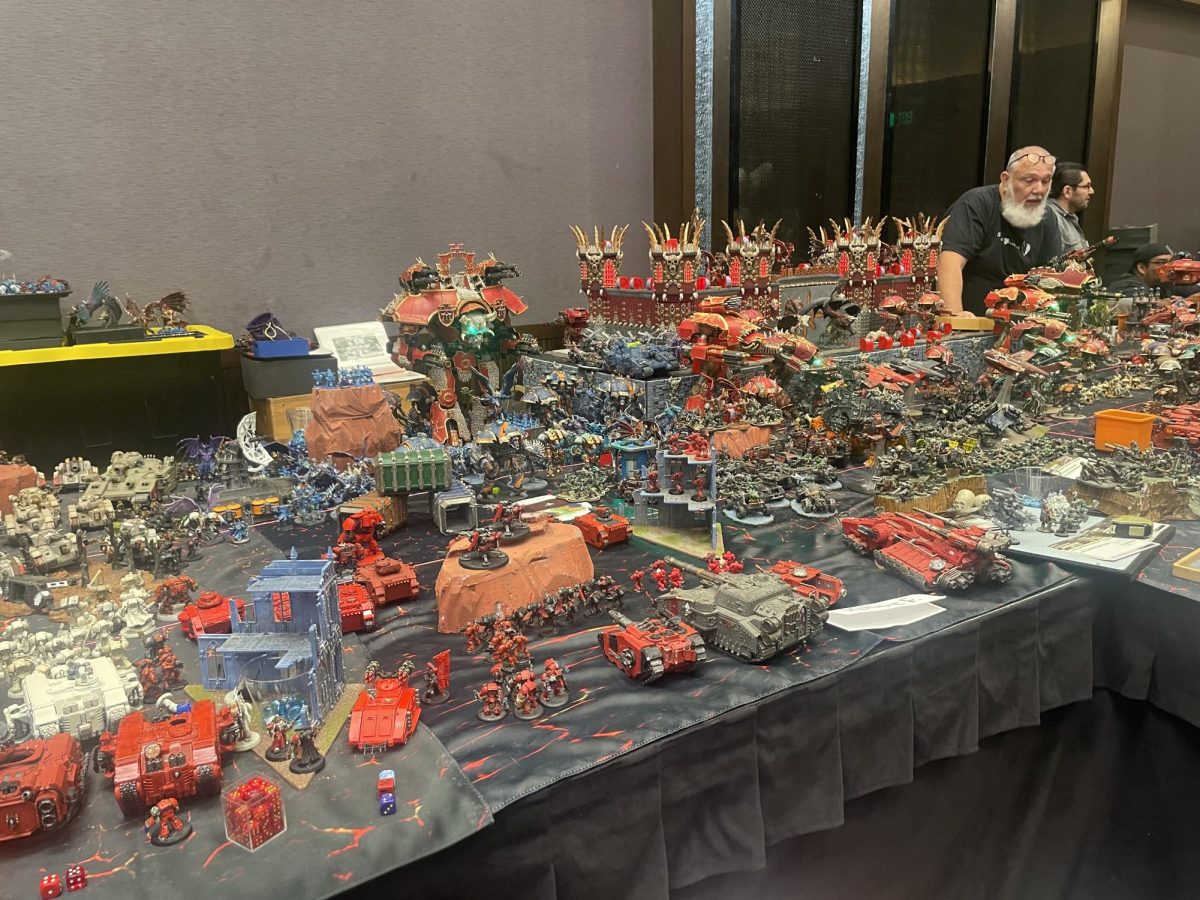In the modern-day world, video games often dominate the role-playing game world, with the community spreading online rather than in person. Despite this, the 1974 game Dungeons and Dragons (D&D), a tabletop roleplaying game, is still relevant in the game industry. There are 13.7 million active players in the community, according to DungeonVault. Freshman Everly Kay plays the game as a hobby, often hosting and playing with friends.
“The first time I played was at a convention; it was really fun. And then from there, I started [attending] these summer programs where you can play for a week. That’s what got it started,” Kay said.
From then on, Kay regularly played at the “Game Chest” board game store. There, she would express her creativity through role-playing, and meet others also fond of D&D’s immersiveness.
“We had one person who would draw out all the characters, and sometimes make the scenes. But [also] painting too, you get these mini figures and put them on your map, to visually see what your characters are doing,” Kay said. “The Dungeon Master I play with is really good at this, they’ll make complicated lore for all the characters. My Dungeon Master [also] does voices for the different characters when she switches them. You’ll know who’s talking, which is cool.”
The Dungeon Master is the leader of the game, overseeing the actions of the players and creating the story for them to follow. The role takes dedication and time, but Kay decided to become one herself, learning that the role involves thinking outside the box to create various worlds for the players.
“[It] teaches you social skills and problem-solving, even though it’s in a fantasy setting. You sit there three hours talking and socializing, and when you talk about the problems, you must be creative,” Kay said.
Kay is drawn to the moldable structure of D&D, valuing the process of world-building and character creation absent from modern board games and video games.
“I prefer D&D over video games, but I see why other people could enjoy video games more. Because of [D&D’s] set of rules, learning all the lingo takes a while for a lot of people, and it can be really stressful. So they drop it. Video games are usually much simpler,” Kay said.
Like Kay, freshman Ava Whitmarsh, who has played with Kay and is a Dungeon Master, agrees that the game of D&D brings people together, with all ages being able to immerse themselves in the flexible and expandable world. While acknowledging that D&D is like a video game, she also believes that video games have creative limits.
“Almost, in essence, D&D is [like a video game]. Only unlike a video game, there’s actually more you can do because you’re just telling it off your imagination, you’re not just limited to what the video game can handle,” Whitmarsh said.
Whitmarsh prefers D&D over a video game because she can interact face-to-face with friends in addition to its ability to exercise her imagination.
“I like how you can hang out with friends and you could be whoever you want, the role-playing aspect of it was really interesting to me,” Whitmarsh said. “The stories that some people come up with are actually beautiful, they could be turned into novels really.”
The makeup for the game makes a welcoming community according to Kay, allowing the players to enjoy the game, building and molding their world to their liking. They are able to use their creativity without feeling judged.
“Usually when you’re at a table, people are really forgiving. If you don’t understand something, they’ll help you, and teach you. It’s a good community. We’re all little nerds, and we all have other little nerds to play D&D with and be happy,” Kay said.
While D&D is fun according to Kay, it can also be a way to form a deeper bond with friends, finding and creating new friendships while doing the things that she loves.
“It’s more creative, because, with video games, there’s only so much you can do, because of the program. With D&D and other TTRPG (Table top, role-playing games) it’s literally whatever you feel like doing,” Kay said. “With [D&D] again, there’s a lot you can do with it, and with creative types, it’s attractive. You have to be open to being confused for a while. Once you get it, it’s really fun.”



